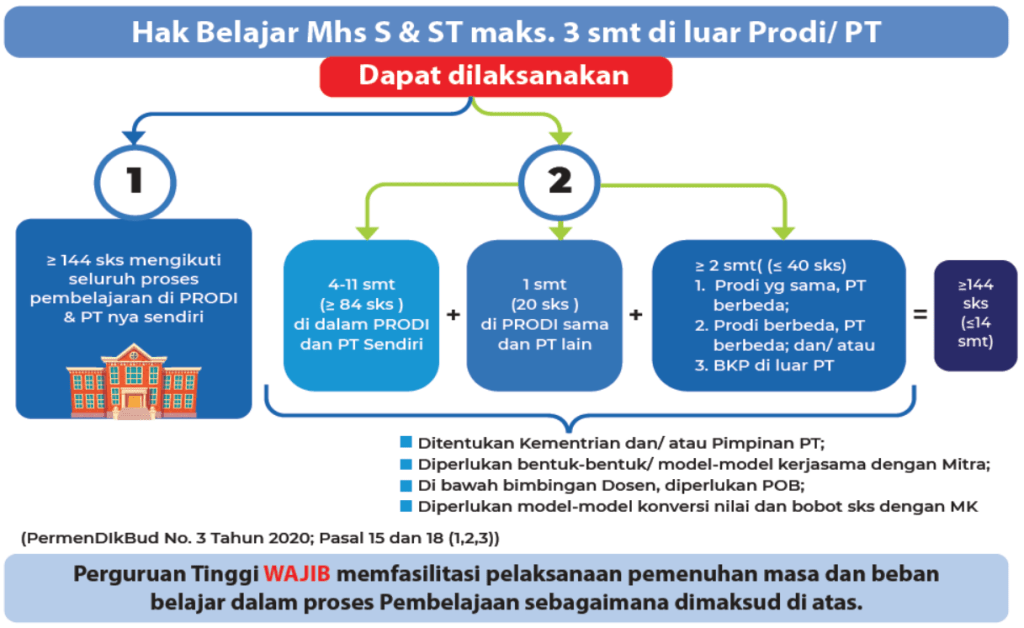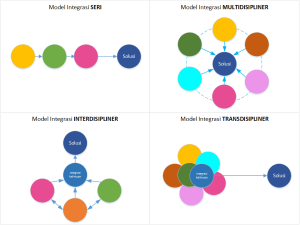Curriculum
Background
Changes in various aspects of life caused by modernization, industrialization, and economic growth have encouraged scientific and technological development progress. This progress is also a challenge for national education in producing human resources that can play a global role. Globalization, characterized by the increasing mobility of the flow of goods and people, including information, capital, ideas, and images, causes values to be dynamic. This situation affects changes in life patterns and the life of society as a whole, especially changes in the demands of the world of work for university graduates. This demand encourages the increasing need for graduates with competencies under the demands of science, technology, art, the world of work, professions, and personality development with their respective characteristics.
To qualify university graduates in Indonesia, the government has issued Presidential Decree No. 08 of 2012 concerning the Indonesian National Qualifications Framework (KKNI) and its Annexes, which are references in the preparation of learning outcomes of graduates from each level of education nationally, according to this Presidential Regulation Regulation of the Minister of Education and Culture no. 73 of 2013. The issuance of Presidential Regulation No. 08 of 2012 and PT Law No. 12 of 2012 Article 29 paragraphs (1), (2), and (3) have had an impact on the curriculum and its management in each program.
KKNI is a new milestone for the world of higher education in Indonesia to produce quality human resources and compete globally. KKNI is a manifestation of the quality and identity of the Indonesian nation related to the national education and training system owned by the Indonesian state. The meaning is that this KKNI allows educational outcomes, significantly higher education, to be equipped with measuring devices that make it easier to match and align with the educational results of other nations in Graduate Learning Outcomes, Study Materials and Courses.
The preparation of the Higher Education Curriculum refers to the Law of the Republic of Indonesia Number 12 of 2012 concerning Higher Education. Furthermore, based on Presidential Regulation No. 08 of 2012, all universities in Indonesia must refer to KKNI and National Higher Education Standards in compiling or developing their curriculum. Furthermore, the challenge universities face in curriculum development in the Industrial 4.0 era is to produce graduates with new literacy skills, including data literacy, technological literacy, and human literacy, with noble morals based on understanding religious beliefs. Higher education institutions need to reorient curriculum development that can answer these challenges. Higher Education Standards (SN-Dikti) are always dynamic following the changing era. Within six years SN-Dikti has undergone three changes, namely from Permenristekdikti No. 49 of 2014 changed to Permenristekdikti No. 44 of 2015, and finally changed to Regulation of the Minister of Education and Culture No. 3 of 2020 in line with the Ministry of Education and Culture policy on Independent Learning-Independent Campus (MBKM).
The Merdeka Belajar-Kampus Merdeka (MBKM) policy encourages students to gain learning experiences with additional competencies outside the study program and/or outside their campus. Based on Regulation of the Minister of Education and Culture No. 3 of 2020 articles 15 to 18, the fulfillment of the study period and load for undergraduate or applied undergraduate students can be carried out by:
1. Follow the entire learning process in the study program at the university according to the study period and load;
2. Follow the learning process within the study program to meet part of the study period and load, and the rest follow the learning process outside the study program.
The mechanism is illustrated as shown in Figure 1. 1.

Figure 1. 1 MBKM Mechanism Diagram
In addition to fulfilling KKNI and MBKM, as one of the new Study Programs at State Islamic University of Sunan Ampel Surabaya, which has a vision: “To become a superior and competitive Islamic University of international standard” and with the mission:
1. Organizing multidisciplinary Islamic science education as well as superior and competitive science and technology,
2. Developing multidisciplinary Islamic science research as well as science and technology relevant to the needs of society,
3. develop research-based religious community empowerment patterns;
So the Information Systems Study Program certainly has the task of translating the mission, one of which is through the teaching and learning process. For this reason, the curriculum of the SI Study Program is designed to realize research related to multidisciplinary Islamic science and science and technology. In the study program curriculum, this vision is answered through the integration of Islamic science and Information Technology in 4 (four) forms, namely: (1) series integration, multidisciplinary integration, interdisciplinary integration, or, if possible, achieve the most complex level integration, namely transdisciplinary.
The implementation of each scientific integration in the Information Systems Study Program is illustrated in Figure 1. The following 2:

Figure 1. 2 Information Systems Integration Model
The series integration model is intended when two or more disciplines are used sequentially to solve a problem. In the integration model, academics blend concepts from different disciplines into a logical sequence of steps toward the expected solution.
While this multidisciplinary integration model is similar to the series integration model, there is no definite sequence of concepts of one science with another. All of these concepts are used simultaneously as needed. This integration is similar to the concept of patchwork, where the corresponding science will answer what is needed. In both series and multidisciplinary integration models, all sciences remain independent, and there is no combination of all these sciences. They are used as needed.